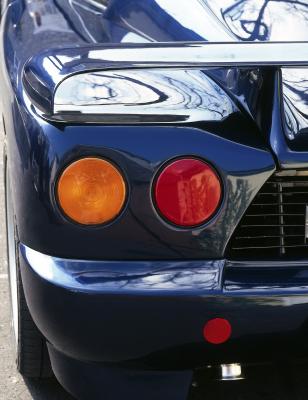
Spoilers do much more than add a sleek and fast look to your car. They actually have an important aerodynamic feature that allows a car to handle better on turns. Spoilers disrupt airflow while a car is traveling. This produces a down force that creates better handling in the rear without having to add extra weight to the car (added weight will reduce a car's top-end speed and acceleration). With this in mind, you can design your own spoiler to suit your car's needs to maximize speed and handling.
Design your spoiler to have a low profile if you only need minimal down force to improve your car's handling. The larger the spoiler, the more air disturbance and down force it will create. A small spoiler will add a little extra handling for a car that already handles relatively well.
Create a spoiler with a high profile if your car doesn't handle particularly well. This is usually a problem with lighter cars such as hatchbacks or compact cars.
Decide how large the angle on the top of the spoiler should be. Down force will increase as the angle gets larger. For example, a spoiler with a top that is perpendicular to the trunk of the car will produce less down force than a spoiler with a top angled at 30 degrees.
Determine the material that you want to construct your spoiler out of. You will make this decision mostly on weight if you're concerned with your car's performance. Fiber glass tends to be a lighter material than most metals. This is the perfect material to use if you want to minimize the weight you add to your car. If extra weight is necessary to improve handling, then a metal spoiler may be best for you.
Match the style of your spoiler to your car. This has nothing to do with speed or handling, but you probably don't want your new accessory to stick out like a sore thumb. This is a matter of preference, but the spoiler should blend in with your car to create a well-integrated look and not something you pieced together at the last minute.